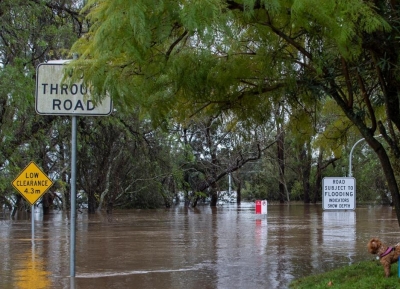Australian states likely to be hit by floods in coming days
By IANS | Updated: September 21, 2022 15:25 IST2022-09-21T15:15:04+5:302022-09-21T15:25:45+5:30
Sydney, Sep 21 Residents in Australia's already deluged east coast have been asked to prepare for further thunderstorms, ...

Australian states likely to be hit by floods in coming days
Sydney, Sep 21 Residents in Australia's already deluged east coast have been asked to prepare for further thunderstorms, intense rain, hail and gusty winds as the nation confronts another series of wild weather conditions.
The Bureau of Meteorology (BoM) said on Wednesday that an extensive band of rain and thunderstorms is sweeping across much of inland New South Wales (NSW), southern Queensland and northern Victoria, bringing moderate to heavy rainfall, reports Xinhua news agency.
Severe thunderstorms are possible for inland NSW and southern Queensland with damaging winds and heavy rainfall leading to flash flooding expected.
The BoM has issued a severe weather warning for heavy rainfall for parts of central NSW, urging local residents to keep clear of creeks and storm drains, and not to drive, ride or walk through flood water.
BoM noted that with many NSW rivers, dams and water catchment areas already at capacity, excess rain will likely cause renewed flooding.
If the floods do occur, they will be the latest in a series that have plagued NSW and its neighboring state of Queensland this year.
From late February to early April, those states endured three intense weather systems that led to record rains and flooding.
The cause of many of these natural disasters has been attributed to La Nina, which is ordinarily expected to take place every three to seven years.
However, Australia has already had two in successive seasons and, earlier this month, the BoM confirmed the third La Nina was fast approaching.
Compounding the situation is another weather event known as a negative Indian Ocean Dipole (IOD), which again relates to the temperature of sea water causing excess rainfalls.
BoM head of long-range forecasts Andrew Watkins told the national broadcaster ABC that the negative IOD "was pushing the odds" of eastern Australia about to have another wet summer season.
Disclaimer: This post has been auto-published from an agency feed without any modifications to the text and has not been reviewed by an editor
Open in app